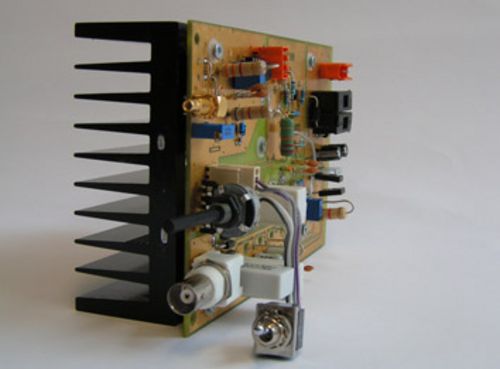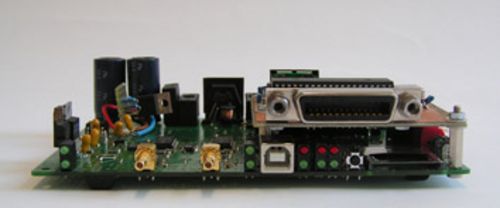This thesis describes the development and implementation of a highly precise control electronics, consisting of an amplifier for piezo actuators and an associated processor board. To achieve mechanical desplacements within the range of nanometers, predominantly actuators based upon the inverse piezoelectric effect are used. Due to the structure of these actuators, they comprise a capacitive load of the required control electronics takes place. Depending upon the design of the actuators, this load can reach up to some 100 nF. For the stabilization of a capacitively loaded amplifier adequate technical circuiting is required.
Due to the area of application (a scanning tunnel microscope) a further demand on the amplifier arises. In the case of a sudden change of the input signal, the output of the amplifier must not exhibit overshooting. This demand and the above mentioned demand of stability driving capacitive load are both fulfilled by the amplifier developed in this work (see Figuire 1).
 Figure 1: Amplifier for piezoactuators
Figure 1: Amplifier for piezoactuators
 Figure 2: Bus-compatible electronics
Figure 2: Bus-compatible electronics
Due to the area of application (a scanning tunnel microscope) a further demand on the amplifier arises. In the case of a sudden change of the input signal, the output of the amplifier must not exhibit overshooting. This demand and the above mentioned demand of stability driving capacitive load are both fulfilled by the amplifier developed in this work (see Figuire 1).
For the control of the amplifier a bus-compatible control electronics with two digital-analog-converters was developed (see Figure 2). One output channel of the developed electronics contains a function generator capable to produce periodic USB-interface, is evaluated with a microcontroller and issued on the appropriate analog output channel. The decision to implement a GPIB-interface was decided, because of the easy integration into existing measuring systems, which are often equipped with a GPIB-interface. A modular design of the hardware of the GPIB-interface enables the combination with other microcontrollers and is the basis equip for further devices with this GPIB-interface.
July 2007